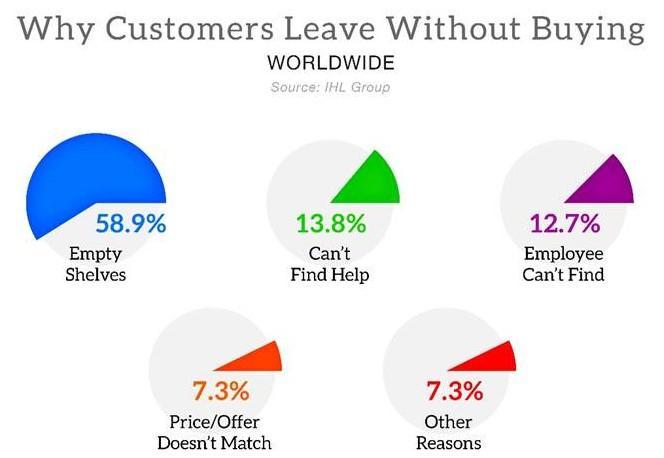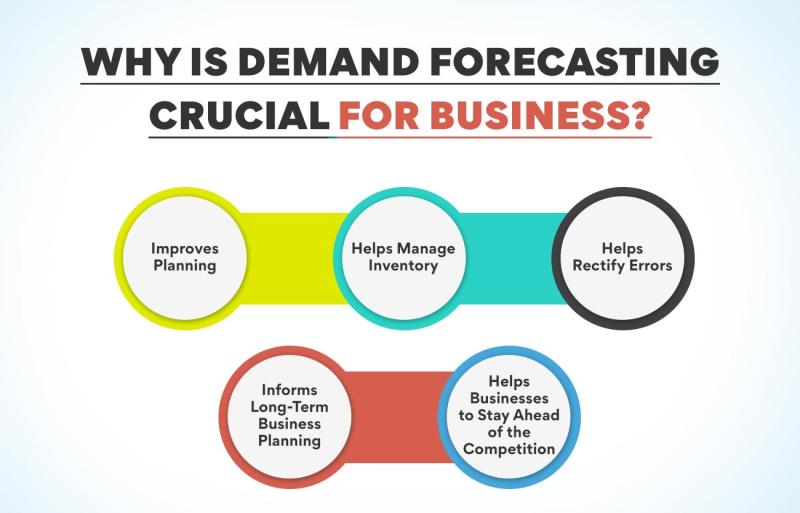An Essential Guide to Demand Forecasting

Keeping the correct inventory levels while managing cash flow is vital to business success and requires accurate demand forecasting. Out-of-stock items can drive customers to competitors, while overstock ties up your space and capital.
Despite the need for meticulous calculations, reports show that most small and medium-sized businesses rely on manual methods or do not track inventory at all. A better system can put your organization ahead of the curve. Discover the answer to understanding product movement and forecasting demand.
Key takeaways:
- Demand forecasting helps you create better budgets and plan your inventory needs.
- You can use various forecasting types and models to make predictions that account for internal and external factors over the short and long term.
- Forecasting requires stellar organization and reliable data collection.
- Projections must account for variables and provide actionable information.
- Demand forecasting is challenging without a unified system for teams to process and review the data.

Image Source: https://progressivegrocer.com/1-5-items-consumers-want-out-stock-local-stores
What is demand forecasting?
Demand forecasting is a process of using past data to estimate your customers’ upcoming demand for your product or service. Your demand forecasts help you determine what to buy and when so that you stay in stock without tying up capital in items that are not selling.
Accurate forecasting also helps a company in the following areas:
- Budgeting
- Scheduling production
- Creating a pricing strategy
- Storing inventory
Projections for demand help a business stay in business and flourish.
Types of demand forecasting
How you create your forecasts depends on the timeframe and your goals. For increased accuracy, you can combine and compare the following methods for a comprehensive understanding of the market.
Short-term
Short-term demand forecasting focuses on predicting customer needs over smaller time frames, such as days, weeks, or a quarter or two. You can use this forecasting for an upcoming promotion or to manage your just-in-time supply chain.
If a product lineup rotates often, you must rely on short-term forecasting. However, you typically use these projections in the context of long-ranging forecasts and shortly before making orders.
Long-term
When you take a look at projections beyond a year in the future, this is long-term demand forecasting. Use these projections to guide your future business strategies, such as for growth and expansion. Long-term numbers are not as precise, but they provide you with useful goals and benchmarks.
Macro-level
Every industry is subject to large external factors that affect consumer demand. There's the human factor: monetary policy, trade disputes, and consumer-goods inflation, for example. Zooming out, global climate change has caused prolonged droughts and heat waves that reduce the supply predictability of agricultural raw materials.
Micro-level
Micro-level forecasting can involve external factors that deal with specifics about your industry and customer segment. It can also deal with internal considerations. Your historical sales, sales team projections, and financial metrics measure the factors that can limit your capacity to meet demand or provide growth opportunities.
Active
Newer businesses and companies with rapid growth must rely on active demand forecasting. When there is a lack of consistent historical data, a business can compile multiple factors from expansion plans, market research, and marketing campaigns.
Passive
The easiest method for forecasting demand is the passive model. Historical internal data from previous seasons helps to predict future sales, without focusing on external factors. However, a lack of quality data can turn the efficiency of this approach into a liability.
Automated programs can handle many types of projections with ease. However, with the new normal of unpredictability, decision-makers in competitive industries need more precision than is possible with traditional historical regression models. They need the types of AI-backed, time-series forecasts that Business Spend Management (BSM) software provides.
Potential challenges of demand forecasting
Accurate predictions are notoriously difficult to make. One of the greatest obstacles is a lack of usable historical sales data.
New companies always have to contend with having no history of sales, but even companies with a substantial history may struggle to organize data into a user-friendly format for analysis. To make matters worse, with how quickly things change these days, the data might be outdated by the time it makes it to key decision-makers.
When different departments silo their information in separate programs, pulling everything together can be a challenge. A misunderstanding over what you have in your warehouse can create inaccurate forecasts, and poor inventory management can get in the way of accurate projections.
In this era of highly unpredictable demand, your supply chain's resilience and efficiency depend on a variety of factors. You need accurate forecasts, but you also need to eliminate bottlenecks and establish a plan that allows you to seamlessly switch to backup resources when needed.
For example, BSM can help you organize pre-vetted alternate supporters so your entire organization, from supply chain to accounts payable, is ready to quickly pivot when a demand spike or supply shortage arises.
Demand planning thanks to demand forecasting
Demand forecasting cannot benefit you unless the data is reliable and you put it into action. Demand planning means taking your findings and turning them into actionable and profitable pursuits.
The importance of scenario planning
Since no one can predict the future, forecasts will vary somewhat from actuality. Variables can change what happens in real time, and organizations need to be able to develop contingencies to pivot as needed.
Demand forecasting and planning require scenario planning. These additional calculations allow you to consider the “what-ifs” and plan accordingly. When a forecasting team can see and compare different paths, a company can remain agile and adjust to minimize negative impacts or seize an opportunity.
How investment in a demand modeler benefits businesses
Recording all of the numbers, calculating them, modeling them, and creating a workable plan can take innumerable hours. If different parts of a finance team use different formats and projection models, making a cogent analysis becomes even more difficult.
Investment in Business Spend Management software allows teams to use one cohesive system for compiling and comparing various types of projections, saving time and presenting an accurate picture that lets units use more time discussing what to do and less time debating over what the numbers actually mean.

Image Source: https://www.edureka.co/blog/types-and-methods-of-demand-forecasting/
An effective modeler for demand forecasting can use powerful artificial intelligence to discover hidden demand patterns. Supply chain teams can better react by finding root causes of issues, and more reliable predictive models help organizations optimize their operations. External data becomes more accessible, and businesses can harness the technology to look 10 years ahead and craft a long-term strategy for financial stability.
A practical solution for demand forecasting
You can eliminate the guesswork from your demand forecasting and make confident decisions with the correct software. Discover how our Demand Modeler can help you balance supply and demand, uncover your demand drivers, and improve your forecasting accuracy, or contact Coupa to have our sales team answer any specific questions you may have.
